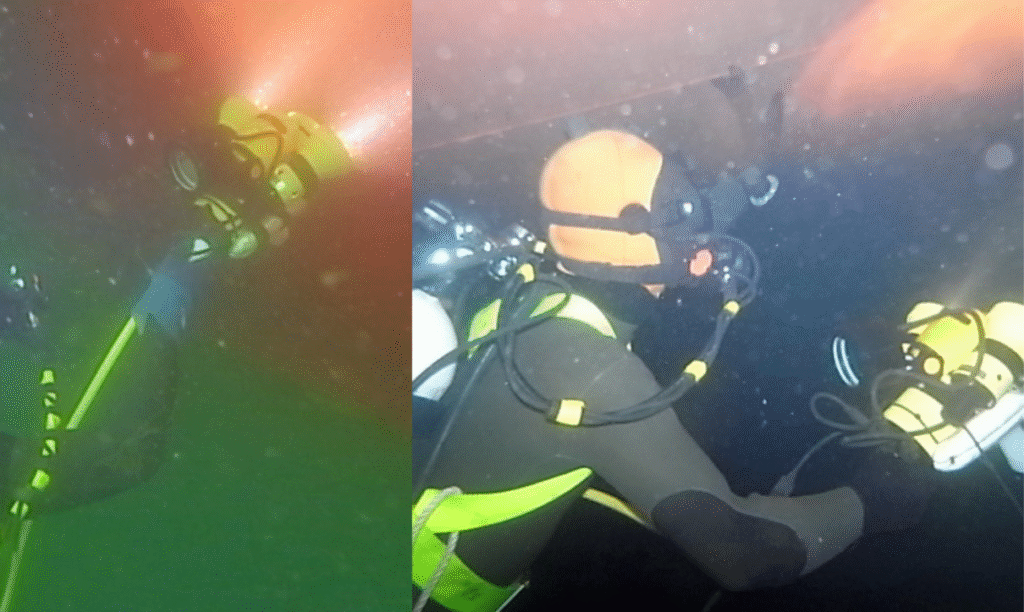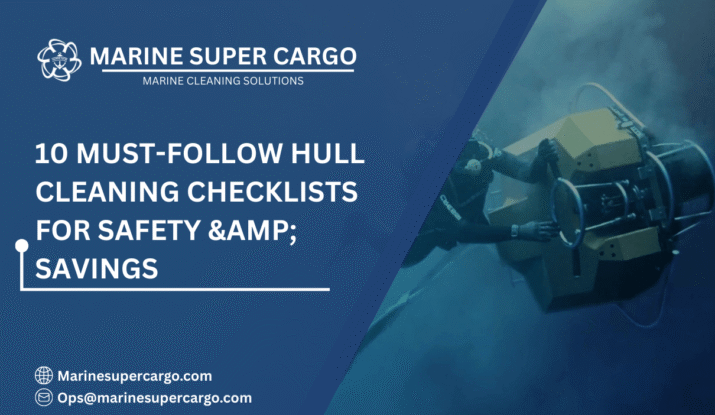Imagine a diver descending beneath the still waters of a harbor, approaching the vast steel wall of a ship’s hull. What looks calm on the surface hides a world of biofouling, debris, and complex equipment. One missed step in preparation or monitoring could put lives, ships, and the marine environment in danger. That’s why Hull Cleaning Checklists are not just helpful—they’re essential.
This guide explores everything you need to know about checklists for hull cleaning operations. Whether you’re a ship owner, manager, or operator, these structured checklists can save costs, ensure compliance, and protect both people and the planet.
Why Hull Cleaning Checklists Are Critical
A single oversight in a hull cleaning job can escalate quickly—think of pollution discharges, diver injuries, or a ship failing inspection. Proper Hull Cleaning Checklists:
- Ensure divers follow safety protocols step by step.
- Reduce operational downtime from avoidable failures.
- Guarantee compliance with IMO and MARPOL Convention requirements.
- Improve biofouling control, aiding faster, fuel-efficient voyages.
- Lower legal risks and insurance costs.
Think of the checklist as the ship’s compass—it keeps everyone pointed toward the right actions in the right order.

Pre-Dive Preparations Checklist
Before cleaning begins, preparation is everything. A pre-dive Hull Cleaning Checklist ensures no detail is missed:
- Confirm permits-to-work are secured.
- Verify vessel machinery and thrusters are locked off.
- Health checks for all divers are complete.
- Inspect all gear, hoses, masks, scrapers, and suction devices.
- Communication systems are tested and functional.
- Brief crew on risk hazards and emergency signals.
- MARPOL waste management procedures reviewed.
This stage prevents surprises underwater by catching risks early.
🌊✨ Client Testimonial Spotlight ✨🌊
— Marine Super Cargo (@Marinsupercargo) September 16, 2025
💬 “The team at Marine Super Cargo feels like part of our crew. From hold cleaning to supercargo support, they handle everything seamlessly. Their quick response and reliable service saved us valuable time and money.” – Mr. Ingmar Domrös pic.twitter.com/bPlooKOakt
Equipment and Safety Gear Checklist
Hull cleaning involves specialized tools that can malfunction if not controlled. Critical points in this Hull Cleaning Checklist are:
- Divers’ helmets and suits inspected.
- Umbilicals, scrubbing tools, brushes, and hydraulic systems were tested.
- Oxygen and decompression chamber availability checked.
- Emergency cutting tools and backup air are in place.
- Record all inspections in vessel logs.
Redundancy matters—backup systems save lives when primary equipment fails.
Operational Checklist During Cleaning
It’s easy to become complacent during routine dives, but the ongoing operational Hull Cleaning Checklist ensures vigilance:
- Monitor diver depth, time, and air constantly.
- Ensure constant two-way communication.
- Conduct periodic line checks for fouling or entanglement.
- Monitor fouling collection so debris isn’t discharged illegally.
- Confirm vessel machinery remains locked during operations.
- Maintain a rescue diver ready at all times.
These actions keep control over an unpredictable underwater environment.
Environmental Compliance Checklist
Hull cleaning not only affects the ship but also the ocean. Ensure environmental safety with this Hull Cleaning Checklist:
- Collect biofouling waste before disposal (no free release).
- Follow MARPOL regulations on waste storage.
- Use approved cleaning agents only.
- Avoid cleaning near marine sanctuaries without clearance.
- Document all waste-handling procedures.
Regulators are paying closer attention to hull cleaning’s ecological impact. Following this checklist prevents fines and preserves marine life. Also, read about underwater hull cleaning in Australia.
Post-Dive Checklist
The work doesn’t end when divers surface. Post-job routines are just as critical:
- Document biofouling removal and waste handled.
- Inspect divers for fatigue or decompression illness.
- Conduct debrief sessions on issues faced.
- Review communication effectiveness.
- Update vessel logs for compliance inspections.
Post-dive routines form a loop, refining the process for the next job.
Crew Roles in Checklists
Hull Cleaning Checklists are only effective if the entire crew applies them.
- Diving Supervisor ensures protocols are followed every step.
- Deck Crew assists with equipment and diver monitoring.
- Engineers prepare compressors and manage life-support equipment.
- Safety Officers audit each checklist step, empowered to halt work if standards slip.
Shared responsibility transforms safety culture from “document-driven” to “lived practice”.
Compliance and Legal Framework
Hull Cleaning Checklists also align daily work with international frameworks:
- IMO Conventions encourage safe vessel and crew management.
- IMCA Guidelines detail diving safety protocols.
- MARPOL Convention enforces pollution prevention rules.
- IAPH port authorities enforce environmental and safety compliance.
Auditors value documented checklists as proof of diligence. Without them, vessel owners risk penalties or blacklisting.
Case Study: Checklist Saves a Cleaning Operation
In one case, divers prepared for hull cleaning but forgot to isolate thrusters. The operational Hull Cleaning Checklist flagged this omission before the dive began. Engines were locked off and confirmed, preventing what could have been a deadly accident.
The lesson? The checklist didn’t just record steps—it corrected them before lives were put at risk.
Future of Hull Cleaning Checklists
The next generation of checklists will combine safety with smart technology:
- Digital PTW Integration linking permits and checklist items live.
- AI-based Monitoring predicting fouling-related risks.
- Paperless Logs accessible via tablets or mobile apps.
- Green-Tech Alignment ties hull cleaning directly to sustainable MARPOL-compliant practices.
- ROV-assisted Automation reduces diver risk during cleaning.
Technology is turning checklists into real-time, intelligent safety systems.

Practical Guidance for Shipowners and Operators
- Standardize checklists across your fleet.
- Involve every crew member in training sessions.
- Treat checklists as daily operational tools, not paperwork.
- Link checklists to audit and compliance systems.
- Document everything—auditors will ask, and history helps optimize processes.
When embraced fully, Hull Cleaning Checklists lower risks and costs simultaneously.
Conclusion
Following structured Hull Cleaning Checklists transforms underwater operations from risky ventures into controlled, reliable routines. Three main takeaways:
- Checklists prevent human error during high-risk tasks.
- They ensure compliance with IMO, IMCA, and MARPOL requirements.
- They save costs by improving efficiency and avoiding downtime.
For operators who value safety, compliance, and sustainability, working with experts like CleanShip.co ensures hull cleaning meets the highest global standards.
FAQs:
Q1. Why are Hull Cleaning Checklists important?
They reduce accidents, standardize procedures, and ensure compliant, eco-friendly cleaning every time.
Q2. Who is responsible for using hull cleaning checklists?
The diving supervisor oversees, but the entire crew must follow and contribute to them.
Q3. How do these checklists support compliance?
They provide documentation to demonstrate compliance with IMO, MARPOL, and port authority audits.
Q4. Can checklists save operational costs?
Yes, by reducing accidents, downtime, fines, and biofouling-related fuel penalties.
Q5. What’s the future of Hull Cleaning Checklists?
Digital, smart, and AI-enabled checklists integrated with compliance systems for predictive safety and efficiency.


